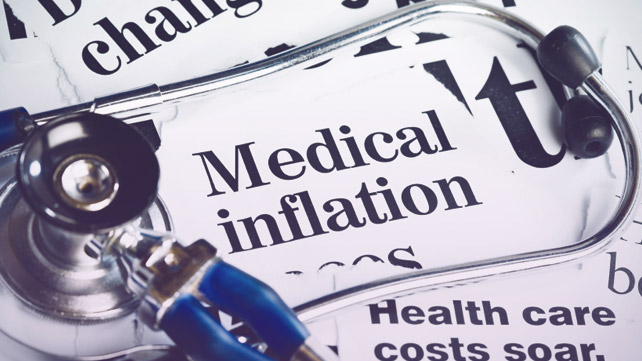Some Hospitals Overcharging By as Much as 1,000 Percent, Researchers Say
Written by Kristen Fischer | Published on June 8, 2015
Hospitals typically mark up prices, but how much is too much? Some researchers have released a report saying these medical institutions may be a bit greedy.

Are hospitals getting greedy?
A new report has concluded that some hospitals are marking up prices by more than 1,000 percent.
The report ranked 50 U.S. hospitals with the highest price hikes over actual costs. Researchers said the hospitals are charging out-of-network and uninsured patients, as well as auto and workers’ compensation insurers, more than 10 times what Medicare allows.
Gerard F. Anderson, Ph.D., of the Johns Hopkins Bloomberg School of Public Health, and Ge Bai, Ph.D., of Washington & Lee University, compiled the research. Their report was published in Health Affairs.
The authors said a lack of regulation and market competition has caused the price gouging. That trickles down to nearly all consumers — including those with health insurance — and contributes to a rise in health spending.
“There is no justification for these outrageous rates, but no one tells hospitals they can’t charge them,” said Anderson, a professor in the Bloomberg School’s Department of Health Policy and Management.
Read More: Do Doctors Get Paid Too Little? »
Charge-to-Costs Running High in Many U.S. Hospitals
In the study, the researchers examined 2012 Medicare cost reports. They studied the charge-to-cost ratio to see how much hospitals were increasing prices beyond what Medicare pays people on its insurance.
Some of the 50 hospitals they identified charged more than 10 times the costs allowed under Medicare. The typical U.S. hospital in 2012 charged 3.4 times above the Medicare-allowable costs. For example, if a hospital incurs $100 of costs, they charge patients $340, the researchers said.
Patients using in-network services also might be paying higher premiums because of the price increases.
Although insurers can negotiate lower rates for patients, about 30 million uninsured people probably are charged the full rate, the report states. This goes for those receiving out-of-network care, or workers’ compensation or auto insurance benefits.
The costs of workers’ compensation and auto insurance policies are higher in states that do not have regulated hospital charges. This is because companies must pay the higher rates, the researchers noted.
Kerry McKean Kelly, vice president of communications and member services for the New Jersey Hospital Association, said the study only looked at hospital charges and not what hospitals are actually paid by individuals and insurance companies.
She noted only about 5 percent of patients are billed at the “charges” rate.
“HMOs, insurance plans, Medicare and Medicaid in general, pay hospitals at rates that are much, much lower than those posted charges,” Kelly said. “One of the challenges that hospitals face is that key payers like Medicare, Medicaid, and New Jersey’s charity care program all reimburse hospitals at rates that are actually below the costs of delivering the care.”
She said the charges have reached high amounts because hospitals are trying to recover some of the losses they incur through poor reimbursements.
Related News: High-Tech Hearts: New Developments for Better Cardiovascular Health »
What Is Too Much?
What constitutes a normal hike and what’s too much? Anderson said it’s common for prices to be marked up by 200 to 250 percent.
“All hospitals mark up to some extent,” he said. “This paper is about the extremes.”
“I cannot think of another industry that can mark up prices 1,000 percent and remain in business,” he added. “One thousand percent is a serious outlier.”
Community Health Systems, Inc., a for-profit health network, runs 25 of the 50 hospitals on the list. Of those 25 hospitals, 20 are in Florida.
Community Health officials did not respond to Healthline requests for comment.
For-profit hospitals make up 30 percent of U.S. hospitals but accounted for 98 percent of the 50 hospitals with highest markups.
Anderson noted that Maryland and West Virginia have laws that control markups. He said other states will probably have to do the same to change the course of hospital pricing.
Related News: Low-Income Cancer Patients Hurt by Refusal to Expand Medicaid »
Is The Affordable Care Act to Blame?
Vivian Ho, Ph.D., a professor and chair of Rice University’s Baker Institute for Public Policy, said she does not believe the costs are a cause of the Affordable Care Act (ACA).
“I don’t think the pricing situation has gotten worse since passage of the ACA,” Ho said. “The problem has always been there.”
She said Obamacare provided measures to control price levels. She said insurers are subject to the 85 percent medical loss ratio requirement that restricts how much they can charge for premiums. Similar legislation was not imposed on hospitals.
“It’s unfortunate, because there is research showing that hospitals display a fair amount of pricing power in some markets, particularly after mergers occur,” she said
 RSS Feed
RSS Feed













 June 12th, 2015
June 12th, 2015  Awake Goy
Awake Goy 
 Posted in
Posted in  Tags:
Tags: 
















